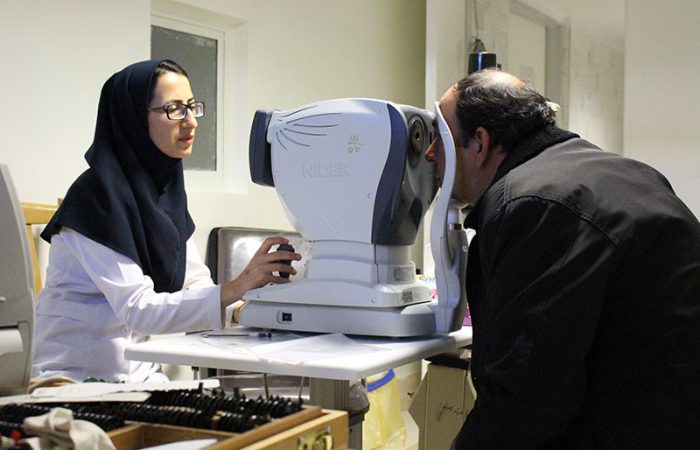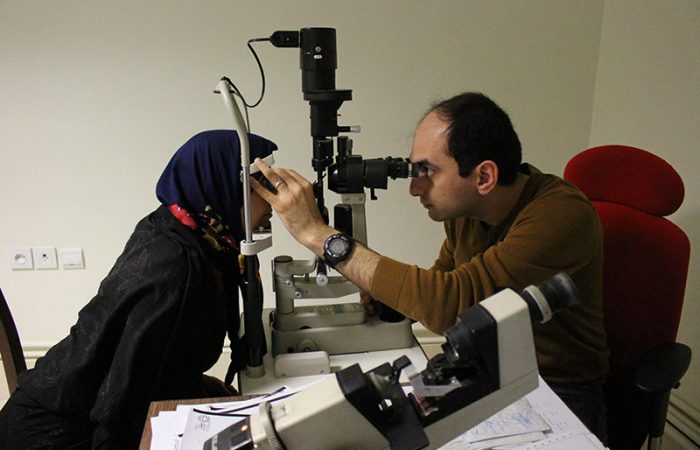

Eye Cohort has only been established on 6 centers of Persian Cohort which Azar Cohort is one of these centers.
Eye Cohort started at the end of the Pilot Phase and when this phase finished sampling of Eye Cohort completed in January 2015. When the enrollment phase started, 11033 individuals have been studied from 2/28/2016 to 31/3/2019 and 2026 members of them have been referred to an oculist. In this study, ophthalmology questions are completed by the optometrist for individuals and it refers to an ophthalmologist if needed. The actions done at Eye Cohort are summarized as follows:
Questioning about the history of diabetes and eye diseases, eye surgery, the last eye examination, possible optical complaints and the family history of eye diseases, the optometrist completes the related questionnaire (optometry) and then optometry examination of the individuals will be done. These cases will be investigated: glaucoma, retinal detachment, Keratoconus, retinitis pigmentosa,
amblyopia, dry eye, the use of contact lens, the use of farsighted and nearsighted glasses, cataract surgery, retina laser in the diabetes, refractive errors, the history of surgery of refractive errors, and tear duct surgery. The equipment of Eye Cohort include auto refracto keratometer, snellen chart, ophthalmoscope, lensmeter, retinoscope, tonometer, trial frame, trial lens, and slit lamp.
In this study, medical imaging tests are done by the optometrist with photo slit and fundus photography.
When optometry examination, fundus photography and photo slit are performed, according to the specified criteria for referring to the oculist, the eye clinic’s clerk arranges the particular individuals to visit the ophthalmologist.
Eye examination by the ophtalomologist
After doing optometric examinations and according to the criteria which have been mentioned at the end of the optometry form, the particular individuals are introduced to the oculist to have a complete eye examination. Then, the oculist will complete the related form.
To fill out ophthalmic examination form
In this form, the oculist registers the results of full ophthalmologic examinations and also mentions the normality of the examinations or eye disease of the individual in the diagnosis part.
Ophthalmology examinations include the study of the following cases:
─ Examination of tear system eyelid or orbit for nasolacrimal duct obstruction, exophthalmos, entropion, ectropion, chalazion and eye dry
─ isotropy and exotropianystagmus, Examination of the extraocular muscles for
─ pterygium, spot or mass in eyeExamination of conjunctiva for
─ Examination of cornea for corneal opacity, corneal dystrophy diseases, thinning of the cornea disorders, corneal edema, corneal ulcer and corneal inflammation
─ afferent pupillary defect and red reflexExamination of intraocular angle for eye pressure,
─ Examination of eye lens for opacity, lack of lens and the existence of the artificial lens in the eye
─ Examination of vitreous for vitreous inflammation and vitreous hemorrhage
─ Examination of macula for edema macula, changes in the pigment of the retina macular degeneration
─ Examination of retina for retinal detachment, retinal hemorrhage, atrophy of choroid vessels and also retina, retinal perforation, retinal vascular occlusion, diabetic retinopathy, chorioretinal inflammation